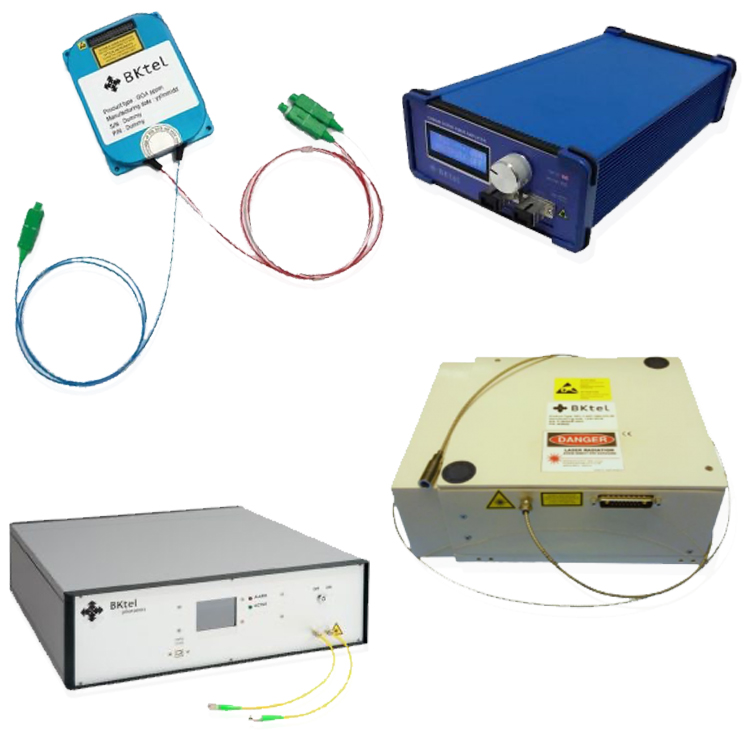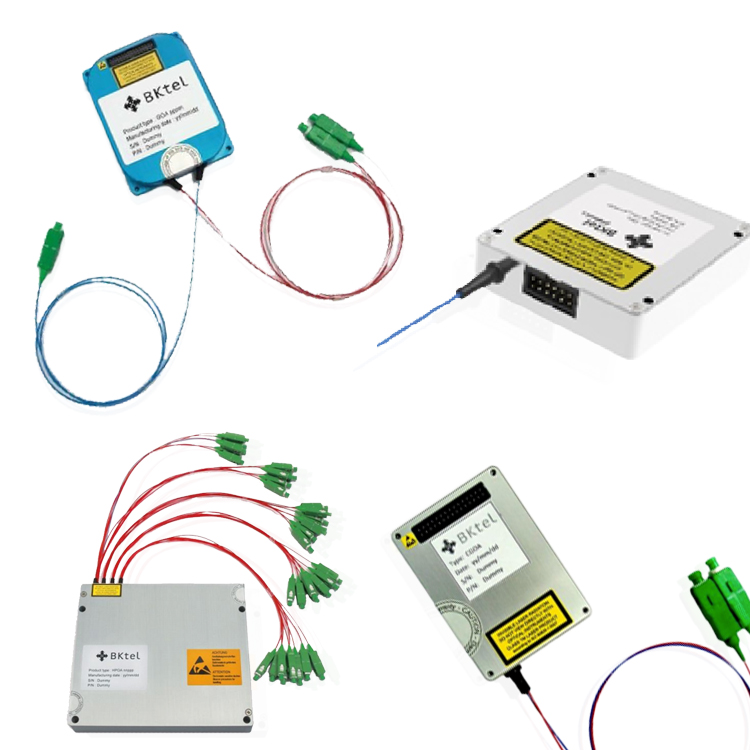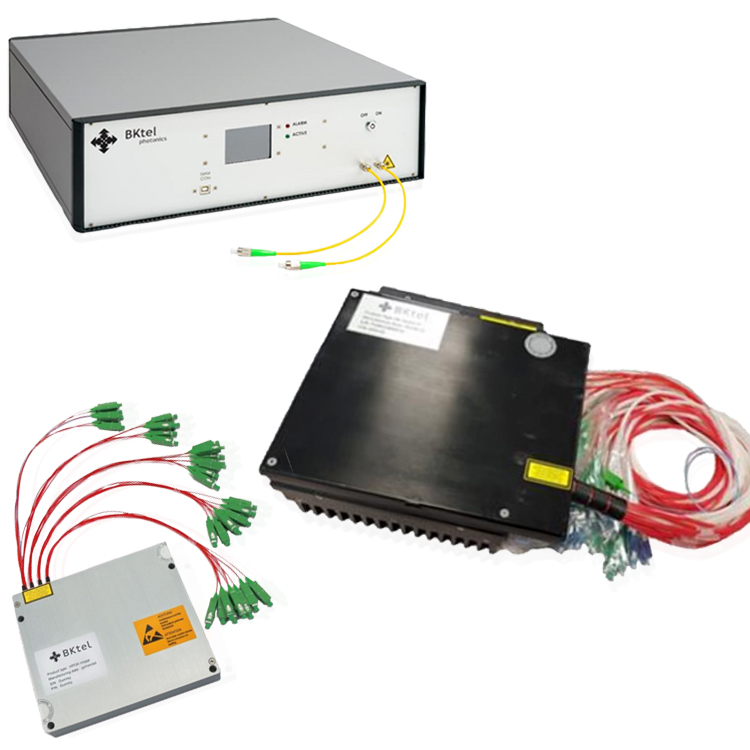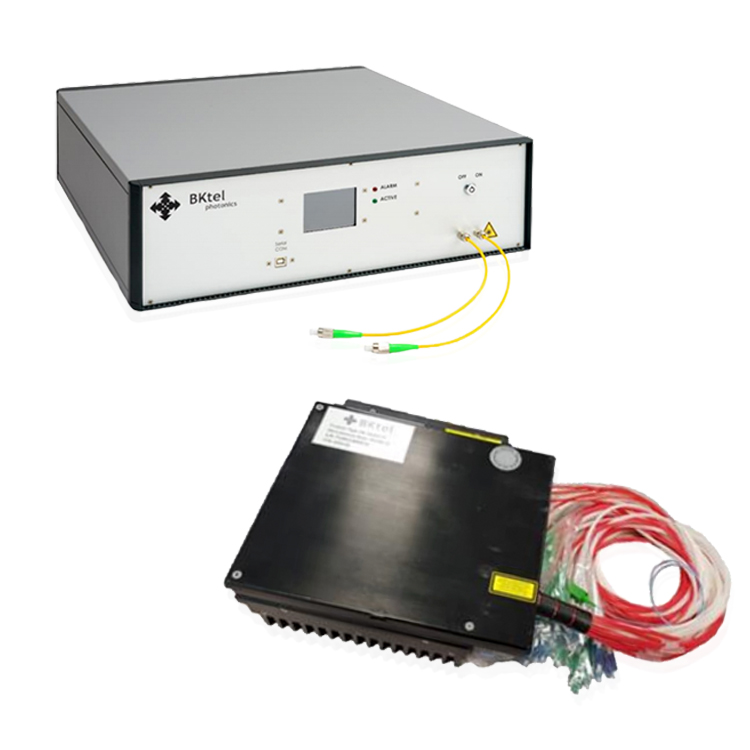1.5um Broadband CW Fiber Lasers
Fiber Laser, Broadband, CW, 1529-1610nm, Up to 158mW
Key Features:
- Broadband ASE Source
- C or L, and C L Band outputs
- Output powers up to 22dBM
- OEM and Turnkey Configurations
- Stable Output Power
- Conductive or Air Cooled
- Low Power Consumption
- Highly Stable
There are many configurations and options available. If you do not see exactly what you need below, please contact us!
Need Quantities? Have a question?
The 1.5um broadband fiber laser is a non-coherent, ASE source of light in the C or L-Band or the C+L band of the Erbium medium. Our fiber lasers are manufactured to Telcordia standards and can be modified to meet your applications requirements. Often, with laser based applications, the technical requirements for the laser are defined by the integration requirements, including but not limited to, environment, size, weight, and power. The highly flexible platform of these lasers allows users the opportunity to configure the laser to best suite their application needs.
GBS Series – The GBS Series of fiber laser modules are a Broad Band Source generating a non-coherent and broad ASE spectrum that combines the C and L-Band of the erbium with up to 22dBm of output power. ASE Broadband Sources are also available in the 1 µm band of the Ytterbium and the 2 µm band of the Thulium. All our Broad Band Sources are proposed in module format or in a Bench Top configuration.
The FL CW/CW Modulated Series of CW fiber lasers is manufactured to Telcordia standards and is suitable for various applications with powers up to 100W at 1um, 30W at 1.5um, and 40W at 2um. Available in both OEM and Turnkey formats, this series offers a variety of standard and custom configurations. Available options and configurations include narrow linewidth, single frequency outputs, C and L-band broadband sources, PM fiber options, power tunability, and high-speed trig./mod.
Benefits:
- Performance and efficiency:
- Compact fiber laser sources perfectly suited for LIDAR applications
- High-quality output and reliability, you can be confident in their performance in even the most demanding situations.
- Continuous improvement in optical performance, efficiency, and reliability of our fiber laser sources
- You can be sure that you are getting the latest and greatest technology available.
- Built to the highest standards, ensuring that you get the quality and performance you need for your applications.
- Versatility:
- Provide great stability and low power usage, making them ideal for a wide range of applications
- Whether you need a laser for industrial, scientific, or medical purposes, we have a solution that will work for you.
- Available in both conductive and air-cooled options, giving you flexibility in how you use and integrate them into your systems.
- Can be integrated into your existing systems as an OEM component, or we can provide a turnkey system that is ready to use out of the box.
- Customization:
- Wide range of options and configurations for our fiber lasers, allowing you to customize your solution to meet your specific needs
- Whether you need a particular output wavelength, polarization, or modulation scheme, we can work with you to create a custom solution.
- Narrow linewidth, single-frequency output, C- and L-band broadband sources, PM fiber options, power tunability, and high-speed triggering and modulation
If you don’t see the exact configuration you need in our standard product line, we can work with you to create a custom solution that meets your specific requirements. Our team of experts can help you design and develop a fiber laser that is tailored to your needs.
If you have any questions or need more information, please contact us.

 SHIPS TODAY
SHIPS TODAY 





